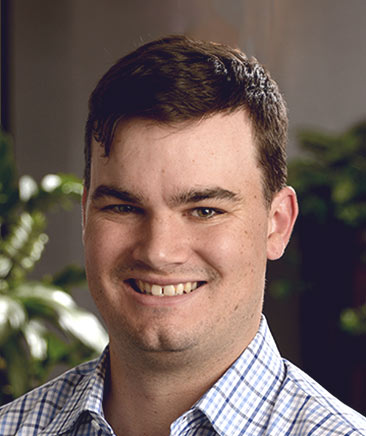ZS Associates and Hospitality Sales and Marketing Association International (HSMAI) recently collaborated with 16 chief sales officers from the world’s leading hospitality brands to reflect on how they managed through the COVID-19 crisis and how they’re charting a path forward as travel demand returns.
HSMAI is a global organization of sales, marketing and revenue management professionals representing all segments of the hospitality industry through its focus on education and research in the industry’s core commercial functions. HSMAI regularly collaborates with ZS's travel and hospitality practice on analyzing and developing innovative perspectives on some of the most important topics in the commercial landscape.
Perspectives on the recovery from sales leaders across travel brands
While COVID-19 disrupted every organization, the impact was not uniform and was driven significantly by chain scale and segment mix. A few common themes emerged across brands that the travel industry can learn from.
Be the willow tree, not the oak tree
As the adage about the benefits of being the flexible willow tree in the face of strong winds goes, the organizations that best navigated COVID-19 kept their sales and support teams agile. This approach took several forms, including:
- Focus on the top of the funnel: Increased effort was directed toward lead generation and qualification to uncover active traveling segments, sometimes requiring working with new industries.
- Growth of generalists: Teams previously aligned to specific segments started taking on active accounts with revenue opportunity which could change day-to-day. Support teams moved to shared service pods to assist a broader part of the organization.
- Evolved engagement model: Virtual or hybrid engagement models represented a major change for most sales teams. They launched new tools and trainings and shared best practices, leveraging inside sales teams that already were highly proficient.
- Transformative technology: From upgrading on-property conferencing technology for hybrid group events to using robotic process automation for mundane, repetitive tasks, technology solutions closed gaps on and above property.
With smaller team sizes, close collaboration across the organization was critical. Facing reduced bandwidth, organizations had to prioritize where to expend effort and work cross-functionally. Pivoting in a coordinated fashion allowed them to support understaffed properties and quickly deliver new offerings.
Finally, competition across chain scales has been and will continue to be fierce. Newly identified segments are actively being served, and brands aren’t going to simply walk away from them just because they weren’t historically targeted. Cost-effective roles and tailored engagement processes will instead be created to codify how to profitably engage these segments and drive incremental traffic to properties, increasing competition up and down chain scales.
The market has changed, and brands should not blindly revert to old ways. Rather, focus on ensuring you have a well-defined recovery go-to-market strategy and on retaining the flexibility that sustained your business during COVID-19. This combination will allow you to continue to adapt as new travel patterns emerge.
Doubling down on the human side of hospitality
Hospitality has always been a people-focused business, and the crisis emphasized the human side of the industry with both customers and internal teams. No organization escaped unscathed, and all had to make painful cuts to staffing and compensation.
At the same time, the severity of the situation became a rallying cry for many hospitality leaders, who recognized COVID-19’s industry-wide impact. They reached out to customers to let them know they cared, even as they faced their own reductions, especially in corporate travel management departments.
Leading with empathy, transparency and frequent communication helped maintain company culture and keep camaraderie strong. Organizations are well-served to not lose sight of the importance of these practices as teams rush to return to normal.
Going into the recovery, people must remain top-of-mind. The fight for talent is intensifying with a focus on upskilling in entrepreneurial hunting, flexibility in day-to-day role expectations and tech savviness. To attract and retain that talent, compensation will have to be competitive against a broader industry set, especially as technology and healthcare providers continue to poach top performers from hospitality.
“Leading with empathy, transparency and frequent communication helped maintain company culture and keep camaraderie strong.”
Carrying forward hard-won wisdom
The organizations that remain agile and retain human-centered leadership will be well-suited to both defend their current market position and expand their footprint into new areas. So, what actions can you take now for your organization?
- Recognize that COVID-19 is receding but isn’t over. It will continue to shape travel demand and the hospitality industry, so keep flexibly building on your successes and save formal reorganizations for a later date.
- Formalize your new cross-functional connective tissue. Avoid retrenchment of old organizational silos. You’ll be in the best position to adapt to an uneven recovery across geographies and segments and to win more than your fair share of the business. With the opportunity to deliver outsized returns for your properties, resist the temptation to return to your “day job.”
- Stay focused on your people to nurture your culture and prevent attrition. Your top performers may well have been approached with other opportunities. Retaining them begins with providing clarity on role expectations and earning potential.
You learned a lot about your customers and teams as your organization navigated COVID-19. Make sure you retain that knowledge and evolve your ways of working rather than simply rebuilding what existed before. When the next inevitable industry crisis emerges—hopefully not another global pandemic—these ways of working will serve you well to be the willow tree and weather that storm, too.
Add insights to your inbox
We’ll send you content you’ll want to read – and put to use.















